- Home
- Neal Stephenson
In the Kingdom of Mao Bell
In the Kingdom of Mao Bell Read online
In the Kingdom of Mao Bell
Neal Stephenson
Neal Stephenson
In the Kingdom of Mao Bell
A billion Chinese are using new technology to create the fastest growing economy on the planet. But while the information wants to be free, do they?
By Neal Stephenson (Published in Wired, February 1994)
In the inevitable rotating lounge atop the Shangri-La Hotel in the Shenzhen Special Economic Zone, a burly local businessman, wearing a synthetic polo shirt stretched so thin as to be semitransparent, takes in the view, some drinks, and selections from the dinner buffet.
He is accompanied by a lissome consort in a nice flowered print dress. Like any face-conscious Chinese businessman he carries a large boxy cellular phone. It’s not that he can’t afford a “prawn,” as the newer flip phones are called. His model is prized because it stands up on a restaurant table, antenna in the fully erect position, flaunting the owner’s connectivity - and in China, connections are everything.
The lounge spins disconcertingly fast - you have to recalibrate your inner ear when you enter, and I half expect to see the head of my Guinness listing. Furthermore, it is prone to a subtly disturbing oscillation known to audio engineers as wow. Outside the smoked windows, Typhoon Abe is gathering his forces.
Shenzhen spins around me, wowing sporadically.
Thirty-one floors below is the Shen Zhen (Deep River) itself, which separates China-proper’s Special Economic Zone from Hong Kong and eventually flows into the vast estuary of the
Pearl River. The boundary serves the combined functions of the Iron Curtain and the Rio Grande, yet in cyberspace terms it has already ceased to exist:
The border is riddled with leased lines connecting clean, comfortable offices in Hong Kong with factories in Shenzhen,staffed with nimble and submissive girls from rural China.
Shenzhen’s population is 60 percent female.
The value of many Hong Kong stocks is pegged to arcane details of PRC government policy, which are announced from time to time by ministries in Beijing. For a long time, the Hong Kong market has fluctuated in response to such announcements; more recently, the fluctuations have begun to happen hours or days before the policies are made public.
Hong Kong television is no longer targeted at a Hong Kong audience; it is now geared for the 20 million people in the Pearl
Delta - the 80-mile-long region defined by Guangzhou (Canton) in the interior, Hong Kong and the Shenzhen SEZ on the eastern bank, and Macao and the Zhuhai SEZ on the western bank.
Thickets of television antennas, aimed toward Hong Kong, fringe the roof of every Pearl Delta apartment block. Since TV Guide and its ilk are not available, Star TV regularly flashes up a telephone number bearing the Hong Kong prefix. Dial this number and they will fax you a program guide. This is easy for Shenzhen residents, because…
Every telephone in Shenzhen has international direct dial.
The first thing that happened during Jaruzelski’s military coup in Poland was that the narcs invaded the telephone exchanges and severed the trunk lines with axes, ensuring that they would take months to repair. This and similar stories have gotten us into the habit of thinking that modern information technology is to totalitarianism what crosses are to vampires. Skeptics might say it’s just a coincidence that glasnost and perestroika came just after the photocopier, the fax, and the personal computer invaded Russia, but I think there’s a connection, and if you read WIRED, you probably do too. After all, how could any country whose power structure was based on controlling the flow of information survive in an era of direct-dial phones and ubiquitous fax machines?
Now (or so the argument goes), any nation that wants a modern economy has to have information technology - so economic modernization will inevitably lead to political reform, right?
I went to China expecting to see that process in action. Ilooked everywhere for hardy electronic frontierfolk, using their modems and fax machines to push the Communists back into their holes, and I asked dang near everyone I met about how communications technology was changing Chinese culture.
None of them knew what the fuck I was talking about.
I was carrying an issue of WIRED so that I wouldn’t have to explain it to everyone. It happened to be the issue with Bill Gibson on the cover. In one corner were three characters in Hanzi (the script of the Han Chinese). Before I’d left the States, I’d heard that they formed the Chinese word for “network.”
Whenever I showed the magazine to a Chinese person they were baffled. “It means network, doesn’t it?” I said, thinking all the warm and fuzzy thoughts that we think about networks.
“Yes,” they said, “this is the term used by the Red Guards during the Cultural Revolution for the network of spies and informers that they spread across every village and neighborhood to snare enemies of the regime.”
See what I mean? Same idea, different implementation.
Our concept of cyberspace, cyber-culture, and cyber-everything is, more than we care to realize, a European idea, rooted in Deuteronomy, Socrates, Galileo, Jefferson, Edison, Jobs, Wozniak, glasnost, perestroika, and the United Federation of Planets. This statement may be read as criticism by people who like to trash Western culture, but I’m not one of those. For a Westerner to trash Western culture is like criticizing our nitrogen/oxygen atmosphere on the grounds that it sometimes gets windy, and besides, Jupiter’s is much prettier.
You may not realize its advantages until you’re trying to breathe liquid methane.
CNN has been running ads for an American company that had been doing business in China - one of those nauseatingly self-congratulatory numbers we saw so much of after the fall of the Iron Curtain. The ad shows us exotic temples, mist-shrouded mountains, twangy music, adorable children. It’s so effective that whenever I see it I have to get out my Tiananmen picture book and take a look at the picture of the Chinese pro-democracy student lying in a fetal position, his brains sprayed across the pavement by a tank that ran over his head.
There is a common Western assumption that China is taking an economic path to a more open society, and in large part it’s based on the cultural biases of people who remember Leonard Bernstein conducting Beethoven’s 9th at the Brandenburg Gate and who reckon that the same thing must be going on in China.
These people like to say that China’s trying to emulate South Korea or Singapore. But I’d say Haiti or Guatemala is more like it.
This article is the result of a two-week trip to Hong Kong, Shenzhen, and Shanghai during September ‘93, during which I tried to get some sense of how the Chinese perceived the influence of technology - particularly digital technology - on their culture.
The answer is that this issue hasn’t occurred to the Chinese yet, and probably never will, because it basically stems from a Western, post-Enlightenment perspective. Going to China and asking people about the Hacker Ethic is like going to Peoria and talking to the folks down at Ned’s Feed & Grain about Taoism.
The hacking part comes to them easily enough - China is, in a sense, a nation of analog hackers quickly entering the digital realm. But I didn’t see any urge to draw profound, cosmic conclusions from the act of messing around with technology.
Shenzhen has the look of an information-age city, where location is basically irrelevant. Unlike, say, Shanghai (which is laid out the old-fashioned way, on an armature of heavy industry and transportation lines), Shenzhen seems to have grown up without any clear central plan, the office blocks and residential neighborhoods springing into being like crystals from a supersaturated solution. Think of the difference between Los Angeles and New York City, and you might get a general idea of what I mean. Streets tend to be strai
ght, wide, and many-laned, with endless iron fences running down the middle so that pedestrians and bicyclists are forced, against all cultural norms, to cross only at major intersections. Shenzhen has more cars and fewer bicycles than most Chinese cities. This has shifted the balance of power somewhat; in, say, Shanghai, mobs of bicyclists play chicken with the cars and frequentlywin. But in Shenzhen they stand defeated on the curbs, waiting for the light to change. Occasionally some young scoundrel will dart out and try to claim a lane and be driven back by taxi drivers, scolding him with horns and shaking fingers.
Even on a humid day (which is to say, every day) the place is rather dusty, like a construction site where things haven’t been tamped down yet. Houses are rare, though there is one district that looks something like an American suburban housing development, albeit more tightly packed. But this one looks like it’s been abandoned and then recolonized by survivalists: Every house is surrounded by a high wall topped with something sharp, and if you peer between the iron bars of the gates, you can see that the windows and patio doors of the houses are additionally protected by iron bars and expanding metal security gates. Beyond that, everyone lives in high-rises.
On every block in central Shenzhen, clean new high-rises protrude from organic husks of bamboo scaffolding. Nissan flatbed trucks rumble away from the waterfront stacked with sheets of Indonesian mahogany plywood on its way to construction sites, where it will be used in concrete forms and then thrown away. The darkness is troubled by the report of nocturnal jackhammers, and all-night arc-welders hollow immense spheres of blue light out of the translucent, steamy atmosphere.
Only a quarter mile away from this scene of hysterical development, a green hillside rises, covered with an undisturbed mat of tropical vegetation and empty except for an ancient cemetery. It doesn’t make sense until you realize that you’re looking across the Shen Zhen into Hong Kong territory. Running parallel to the river is a border defense system meant to keep the mainland Chinese out. A chain of sodium-vapor lamps and a high fence topped with razor ribbon cuts across lakes and wetlands that have become wildlife refuges by default.
The population of Shenzhen is 2.6 million. Thirteen years ago it was two thousand. The growth rate of Guandong Province, which includes the Pearl River Delta, is the highest in the world.
It would be a lot higher if not for the Second Border that separates the Special Economic Zone from the rest of China.
When you’re leaving Shenzhen you simply cruise through a chute without stopping. When you recross the Second Border on your way back, it’s a different story.
The highway broadens into a vast slab of pavement covered with fine red dust from the Pearl Delta’s devastated hillsides.
You and all other passengers have to bail out and pick your way hazardously through traffic until you’ve reached the border station.
Here you are funneled through one of many parallel lanes and checked out by a man in a uniform. If you’re a Westerner, they don’t even bother to look at you. If you look Chinese, you may have problems. A non-Chinese passport will get you through, of course, unless it’s a British passport from Hong Kong; since the PRC doesn’t recognize the legitimacy of Hong Kong, such people have to get a special document that serves the function of a passport inside the PRC.
If you are mainland Chinese, you don’t get through unless the government has given you permission to live in the Special Economic Zone. Generally, such permission is only given to the young and college-educated. So Shenzhen has its own corrugated shantytowns of illegal immigrants, sitting in plain sight next to major highways, in the occasional patch of land that hasn’t been covered with high-rises or factories yet.
Apparently the Shenzhen authorities have the same schizophrenic attitude to the illegals that many Germans do - they’re tolerated as long as they’re convenient.
Many Shenzhen residents would, of course, love to get across the river into Hong Kong, which has its own such neighborhoods. And many residents of Hong Kong are scrambling to get passports from Canada, the US, or the UK. Once they’ve secured non-PRC passports, they frequently come back to Shenzhen to start and manage businesses, staying in luxury condos built specifically for them by the city fathers. Seen through all these concentric barriers, the Overseas Chinese (ethnic Chinese returning to their homeland) must seem infinitely remote to the peasants being turned away at the Second Border. Locals call them the “spacemen.”
Shenzhen is touted as an experiment in free enterprise, both by the government of the PRC and by an especially fatuous breedof Western free-market evangelist - people who think that a free market will lead to a free society. This gets us into some awkward questions of just what we mean by the word “free.”
I wasn’t able to get out to any of the slave labor camps, where many Chinese are hard at work cranking out exportable trinkets, but I did meet plenty of real-life indentured servants. After June 4th (which is how the Chinese always refer to the crushing of the Tiananmen demonstration) the government instituted a new program whereby any student who graduated from college was deemed to owe the government five years of service, at a place and in a job to be chosen by, you guessed it, the government. Needless to say, this is a handy way for the government to control the behavior of that frisky Tiananmen generation, while also giving government enterprises, and Sino-foreign joint ventures, a handy recruitment system.
Shenzhenese are proud of their railway terminal, which is a good quarter-mile long and ten stories high, clad in mirrored glass. Centered high on the side of the building, enormous in red neon, are the Hanzi characters for Shen Zhen, drawn in a rather spidery hand. Supposedly the calligrapher was none other than Deng Xiaoping. He launched the SEZ thirteen years ago, then swung through recently and spoke the immortal words “I like this,” which has led to the founding of more SEZs in other parts of China.
I wandered through the hall where passengers line up to buy tickets, if they haven’t already bought them from the cellphone-brandishing wise guys loitering outside. The space was regularly interrupted by heavy structural pillars, three or four feet on a side, sheathed in white stone.
A gaping hole had been kicked in one of them, revealing that the “pillar” was actually a column of air with several naked strands of inch-and-a-half-thick rebar wandering through it.
Holes had been kicked in other pillars by inquisitive passengers, affirming that the builders had not bothered to pour a single tablespoon of actual concrete.
Paul Lau, a Hong Kong-based photographer, accompanied me.
“Corruption,” he said, shaking his head in exasperation like a farmer who’s just discovered a cutworm infestation in his field.
Corruption in China is no secret, but the way it’s covered in
Western media suggests that it’s just an epiphenomenon attached to the government. In fact, corruption is the government. It’s like jungle vines that have twined around a tree and strangled it - now the tree has rotted out and only the vines remain. Much of this stems from the way China is modernizing its economy.
If you thought zaibatsus were creepy, if Singapore’s brand of state-backed capitalism gives you the willies, wait until you see the Sino-foreign joint venture. The Russians, in their efforts to turn capitalist, have at least tried to break up some of the big state monopolies and privatize their enterprises - but since
China is still Communist, there’s no reason for any of that nonsense. Instead, foreign companies form joint ventures with enterprises that are still part of the government - and, of course, everything is part of the government.
On every block you see an entrepreneur sitting at a sidewalk card table with one or two telephones, jury-rigged by wires strung down an alley, up the side of a building, and into a window. There is a phone book, a price chart, and a cigar box full of cash (in Shenzhen, always Hong Kong dollars). Some fastidious operators have a jar full of mysterious disinfectant with which they wipe down the mouthpiece and even the buttons after each customer is finished. Most
of these enterprises also feature a queue of anywhere from one to half a dozen people. The proprietor will step in and cut long-winded customers off, especially if someone in the queue makes it worth his while.
All of the phone wiring is kludgey. It looks like everyone went down to Radio Shack and bought reels of phone wire and began stringing it around, across roofs, in windows, over alleyways.
Hundreds of wires explode from junction boxes on the sides of apartments, exposed to the elements.
I was checking out some electronics shops along one of
Shenzhen’s wide avenues. Above the shops were dimly lit office spaces housing small software companies or (more likely)
software departments of Sino-foreign joint ventures. If there was a Chinese silicon valley, this was it. I wandered into analley - the Silicon Alley, perhaps - and discovered a particularly gnarly looking cobweb of phone wires. Paul Lau started taking pictures of it. Within moments, a couple of attentive young
Chinese men had charged up on bicycles and confronted him.
“Are you a reporter?” they demanded.
“No, I’m an artist,” Paul said, leaving them too stunned to make trouble. The lesson I learned from this is that a sophisticated
Hong Kong Chinese knows how to use the sheer force of culture shock to keep his mainland cousins at bay. The Shenzhenese are pretty worldly by Chinese standards, but compared to the
Hong Kong Chinese, who may be the most cosmopolitan people on earth, they are still yokels. This cultural disparity is about the only thing Hong Kong has going for it as 1997 approaches; but more about that later.
Everyone has a pager. Expensive models have LCD screens that can display Hanzi characters. Cheap ones display a few digits.
If you have one of these, you carry a tiny chart listing a couple of hundred of the most common Chinese surnames, each one with a numerical code. When you’re paged, you read the number off the screen and refer to the chart to find the name of the caller.
If you own stock on the Shenzhen exchange, you can cut a deal with your pager company that will cause the price of that stock to appear on your pager twice a day, at 10:00 and 4:00.

 Zodiac: The Eco-Thriller
Zodiac: The Eco-Thriller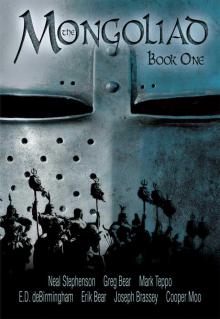 The Mongoliad: Book One
The Mongoliad: Book One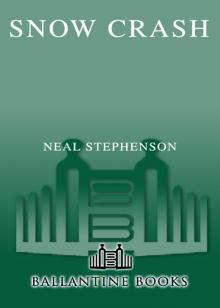 Snow Crash
Snow Crash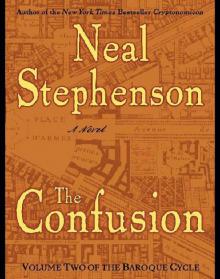 The Confusion: Volume Two of the Baroque Cycle
The Confusion: Volume Two of the Baroque Cycle The Rise and Fall of D.O.D.O.
The Rise and Fall of D.O.D.O.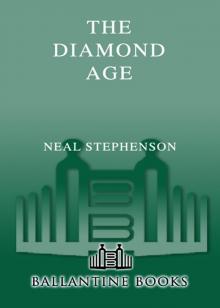 The Diamond Age: Or, a Young Lady's Illustrated Primer
The Diamond Age: Or, a Young Lady's Illustrated Primer The Big U
The Big U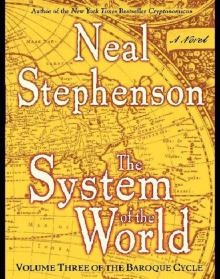 The System of the World: Volume Three of the Baroque Cycle
The System of the World: Volume Three of the Baroque Cycle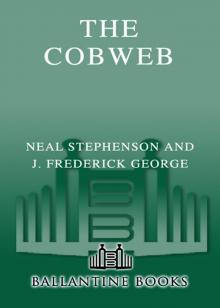 The Cobweb
The Cobweb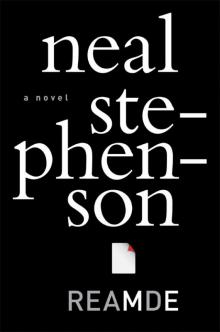 Reamde
Reamde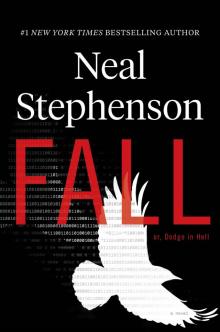 Fall; or, Dodge in Hell
Fall; or, Dodge in Hell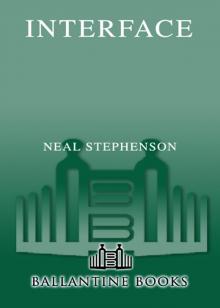 Interface
Interface Quicksilver
Quicksilver The Mongoliad: Book Three
The Mongoliad: Book Three Seveneves
Seveneves Atmosphæra Incognita
Atmosphæra Incognita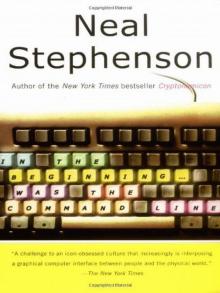 In the Beginning...Was the Command Line
In the Beginning...Was the Command Line Anathem
Anathem The Rise and Fall of D.O.D.O.: A Novel
The Rise and Fall of D.O.D.O.: A Novel The Mongoliad: Book Two
The Mongoliad: Book Two Diamond Age or a Young Lady's Illustrated Primer
Diamond Age or a Young Lady's Illustrated Primer THE System OF THE WORLD
THE System OF THE WORLD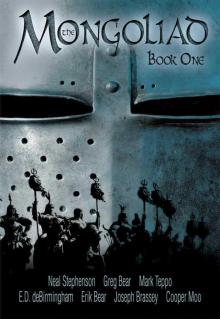 The Mongoliad: Book One tfs-1
The Mongoliad: Book One tfs-1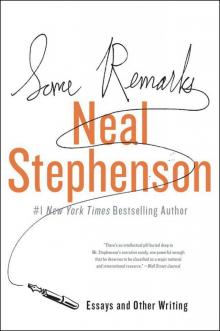 Some Remarks: Essays and Other Writing
Some Remarks: Essays and Other Writing Zodiac
Zodiac Spew
Spew The Baroque Cycle: Quicksilver, the Confusion, and the System of the World
The Baroque Cycle: Quicksilver, the Confusion, and the System of the World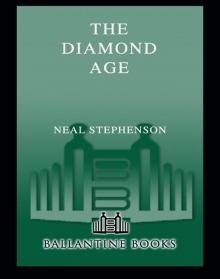 The Diamond Age
The Diamond Age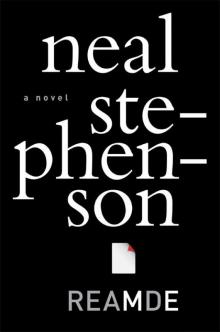 Reamde: A Novel
Reamde: A Novel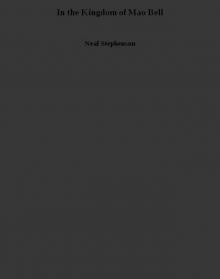 In the Kingdom of Mao Bell
In the Kingdom of Mao Bell Mother Earth Mother Board
Mother Earth Mother Board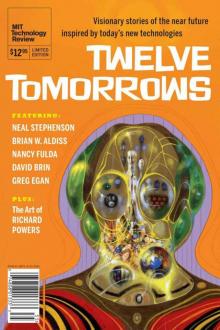 Twelve Tomorrows - Visionary stories of the near future inspired by today's technologies
Twelve Tomorrows - Visionary stories of the near future inspired by today's technologies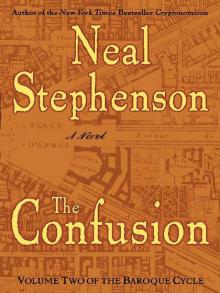 The Confusion
The Confusion The Great Simoleon Caper
The Great Simoleon Caper The Mongoliad: Book Three tfs-3
The Mongoliad: Book Three tfs-3